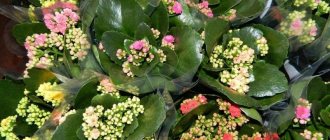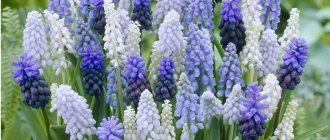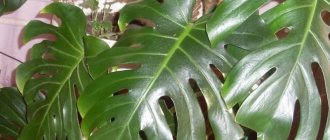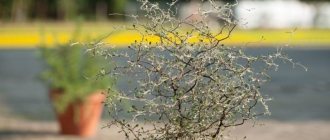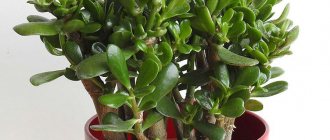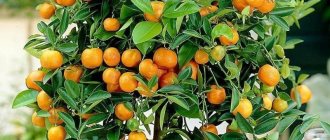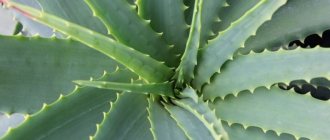- Reports
- Plants
- Houseplants
Indoor plants bring great benefits to humans. Thanks to them, the air becomes cleaner, because green leaves release oxygen, which means it’s easier to breathe in the house. Plants will make dry air more humid and also reduce its toxicity. Some species, such as aloe, are even used in folk medicine as anti-inflammatory and bactericidal agents.
Typically, houseplants are divided into several broad groups:
1) Decorative and decorative-flowering plants - the most common group of plants, as a rule, not particularly demanding to care for, and therefore widespread both in apartments and in municipal institutions. Ornamental plants are usually small shrubs that do not have flowers or fruits. Decorative flowering plants can both bloom and bear fruit.
2) Bromeliads are bright and unusual plants that love moisture. The most famous plant of this species is pineapple. Aechmea is usually grown in indoor conditions. The peculiarity of these plants is that after flowering they usually die.
3) Cacti and succulents are plants that accumulate water in their stems and leaves, so they do not need frequent watering. The most famous succulent is Kalanchoe.
4) Ferns and palms are special types of ornamental plants, famous for their large spreading leaves. They need good hydration not only of the roots, but also of the leaves. They look impressive in large, bright rooms, while ferns are best placed in hanging flowerpots.
Despite such a wide variety of plants, each one is unchanged in three components.
Firstly, strict adherence to temperature conditions is necessary. Each plant has its own, and therefore, before purchasing, you need to familiarize yourself with the conditions of maintenance. Indoor plants do not like sudden changes in temperature, and therefore in winter, if the room is often ventilated, it is worth removing the seedlings from the windowsill to a warmer place. The maximum acceptable temperature, subject to normal humidity, is about 30 degrees.
Secondly, it is important to give the plant the required amount of light. If the plant is light-loving, it is important to place it closer to the sun, and if it gets dark outside early, then it makes sense to purchase a special lamp for plants. Lack of light leads to yellowing and lack of growth. On the contrary, it is better to remove shade-loving plants from window sills and place them in those corners where there is not too much light. Excessive light can cause burns and drying out.
Thirdly, proper watering. The most important thing is to observe it regularly. The watering interval should be even; neither excess nor lack of moisture should be allowed. In addition, any plants need to enrich the soil with microelements.
It is difficult to imagine a modern home without indoor plants. In most apartments you can find at least one pot of violet or cactus. Some even turn their home into a greenhouse. Plants, like pets, need care and attention. Proper care will transform even a seemingly unsightly plant, turning it into a real interior decoration.
Message 2
Almost every home that loves indoor flowers has chlorophytum. There has been a long-standing debate about its benefits and harms. How do you know if you should keep this plant indoors where people live?
Numerous studies claim that indoor plants release oxygen and absorb carbon dioxide, thereby purifying the room. What can be said about chlorophytum? This is a plant with long dense leaves with a white border around the edges or in the center of the leaf. It does not require special care and is in a friendly neighborhood with other plants. It decorates the interior of the room with its appearance and hanging inflorescences.
In modern homes, synthetic finishing materials are increasingly used for walls, floors, and ceilings, which, when the air temperature changes, emit toxic substances: formaldehyde, phenol, etc. And it is chlorophytum that can reduce the impact of harmful substances on a person in his home.
Florists recommend placing this plant in the kitchen, where the airspace is considered the most polluted and the most harmful substances are released from household appliances, artificial surfaces and gas. The flower is not picky about lighting and sunlight; in addition to purifying the air in the room, chlorophytum is also capable of moisturizing it. After all, the plant comes from the tropics and subtropics. This ability of the flower requires constant watering and not allowing the soil in the pot to dry out.
To enhance the plant’s ability to moisten the room, it is recommended to add activated carbon to the soil. Another amazing ability of chlorophytum is to destroy mold and mildew and counteract microorganisms. But even though the flower is considered unpretentious, it is still necessary to wash its leaves occasionally under running water to remove accumulated dust. In the warm season, this plant looks elegant on a personal plot, adding to the overall design of the area.
They say that this amazing plant is capable of reducing negative energy around itself, is useful for humans and is safe for animals. Chlorophytum is able to harmonize the behavior of people living in the room, and reduces the potential for conflict between them. You can confidently place this amazing plant in your home.
2nd, 6th grade. The world. Technology
Indoor medicinal plants
Introduction.
Every day we are surrounded by hundreds of plants. We come across them everywhere, including in our own home - we are talking about indoor plants. Most often, the role of these plants is reduced to decorating our home, which is why they are, in fact, called “decorative”. There is hardly a person who does not have a couple of flower pots with aloe, ficus or geranium so familiar to us on the windowsill in their room, which, nevertheless, are very pleasing to the eye, especially when there is a harsh winter outside the window. Some people are seriously interested in breeding their green pets and carefully care for them. But both of them do not always know about their medicinal properties. And you need to know this! Of course, it cannot be said that, having learned about this, amateurs will rush to use plants as medicine, but in case of emergency, the most valuable indoor inhabitants can be propagated in large numbers. On the other hand, even a little information about foreign plants is not useful in a general educational sense.
Indoor medicinal plants.
Aloe.
Aloe belongs to the lily family (Liliaceae). The name aloe goes back to Greek, and even earlier to the ancient Arabic language and is associated with the words “brilliant” or “bitter”.
Aloe is a plant of the deserts of Eastern and Southern Africa. The Arabs called the plants sabur (literally patience), because they are able to survive for a long time without water.
In indoor conditions, the following types are most often found: Aloe arborescens, less commonly Aloe variegated, Aloe foldata and Aloe spinosa.
These are succulent plants, the trunks of which in their homeland reach a height of 4 m, and the leaves are 65 cm long, usually crowded at the top of the trunk. The species we cultivate are relatively low-growing. The leaves are elongated and xiphoid with spiny edges. The flower raceme is tall, ending in a long raceme of red or yellow beautiful flowers. Aloe leaf juice contains aloe-emodin (about 2%) and other anthra derivatives.
Of all the species, only aloe vera is official. It is used either in the form of dry juice - sabur, or fresh juice, or in the form of biogenic stimulant preparations.
Sabur is the dry, hardened juice of aloe leaves after condensation. The leaves are pressed, after which the resulting juice is evaporated. The finished product looks like black-brown fragile pieces of different sizes. The taste is very bitter, the smell from traces of essential oil is weak and unpleasant. Fresh juice: after squeezing the leaves, it is preserved with 20% alcohol. It has a bitter taste and a pleasant smell. Preparations of biogenic stimulants: liquid extract for injection and complex emulsion.
Application. Tincture and dry extract are prepared from sabur. In large doses, sabur and its preparations have a laxative effect, in small doses they improve digestion and increase appetite (bitterness). A drug that is
canned fresh juice has a bactericidal effect. It is used in the form of lotions for purulent inflammatory processes and for irrigation of wounds. The preparation of biogenic stimulants in ampoules increases the protective functions of the sick organism. Aloe emulsion is used for skin lesions, especially after radiation therapy.
In folk medicine, aloe is used to treat ulcers, wounds, pulmonary tuberculosis, inflammatory processes in the gums, as well as in the eyelids and other eye diseases, to treat eczema, lupus and stomach ulcers. In China it is also used for sexually transmitted diseases.
Citrus lemon.
The name "lemon" probably comes from the Malay "lemo", and in China it is called "limung", which means "good for mothers".
Citrus limon belongs to the rue family (Rutaceae) and is an official medicinal plant.
Citrus fruits are low evergreen trees; in some species the branches are equipped with spines. The leaves are leathery, shiny, dark green. Flowers solitary or several in the leaf axils, white, regular, separate-petalled, calyx 4-5 toothed, small. All parts of the plant are fragrant. The fruit is berry-shaped, unique in other families, and received the special name hesperidium. Southeast Asia is considered the birthplace of citrus fruits.
The peel of the fruit contains about 0.6% essential oil. It is obtained from freshly peeled peels by squeezing out pieces under pressure. The oil obtained by distillation largely loses its natural odor.
Application. Essential oil is used to correct the smell and taste of medicines. Citral contained in essential oil, in the form of a 1% alcohol solution, is used in the treatment of hypertension (20-40 drops each) and in the form of an aqueous-alcohol solution (1:10000) in ophthalmic practice for keratitis and conjunctivitis. The drug “Vitamin P from citrus fruits” is extracted from the peel, which is a complex of flavanone glycosides. The peel, cut into strips and dried, contains about 2.5% essential oil, used as a bitter-spicy choleretic agent.
Passionflower.
The genus passionflower includes about 400 species belonging to the passionflower family (Passifloriaceae), which grow mainly in the tropics and subtropics of America.
Most often found in rooms are blue passionflower (Passiflora caerulea) and incarnate passionflower (Passiflora incarnata). The official species is only passionflower incarnate (meat-red passionflower, “cavalry star”). This is a tropical liana. Simple rhizomes several meters long and 3-15 mm thick develop underground. The stem is climbing, smooth, herbaceous. The leaves are simple, on long petioles. The flowers are solitary on long peduncles, regular, very beautiful, with a double perianth. Passion flowers are amazing and unique. Their somewhat strange name is “flowers of passions.”
of the Lord" was given by early missionaries, in whose religious consciousness the individual organs of the unusual flower were figuratively identified with the instruments of torture of Jesus Christ. In fact, the large, brightly colored and very elegant passionflower flower does not at all make an ominous impression, but rather resembles a magnificent sovereign order. It’s not for nothing that he was also called the Cavalier’s Star. The homeland of passionflower is tropical Brazil.
Medicinal raw materials are a mixture of broken herbaceous stems 1-4 mm thick, tendrils, whole and broken leaves, a small amount of flowers that have lost their purple color, and unripe fruits. The smell is weak, the taste is bitter.
Application. A liquid extract (1:2) is used, which is a sedative for neurasthenia, insomnia, chronic alcoholism, and menopausal disorders. Passion flower extract, which is a dark brown liquid with a bitter taste. Use in courses of 20-30 days strictly as prescribed by the doctor.
Kalanchoe.
Kalanchoe is a tropical genus of the Crassulaceae family, numbering about 125 species. The name of the genus comes from the Chinese name of one of the species.
The official species is Kalanchoe pinnata (bryophyllum, indoor ginseng) - Kalanchoe pinnata. This is a perennial succulent evergreen herbaceous plant 50-150 cm high. The stem is straight, powerful, woody at the base. The leaves are opposite, petiolate, juicy, thick, light green with a reddish tint along the edge. The plant's homeland is tropical Africa, the island of Madagascar.
Fresh shoots collected during the growing season serve as medicinal raw materials for the production of medicines.
Pharmacological action – anti-inflammatory agent, which also has regenerating and wound-healing properties.
Application. Kalanchoe juice and the drug “Kalankhin” (powder, granules, liniment) are obtained from fresh shoots, which are used in surgical, dental and obstetric-gynecological practice as an anti-inflammatory and wound-healing agent. Used in the treatment of trophic ulcers, burns, bedsores, non-healing wounds, cracked nipples in nursing women, as well as in the treatment of tonsillitis, stomatitis and gingivitis. The drugs promote rapid epithelization, cleansing wounds and ulcers from necrotic tissue.
Mimosa is bashful.
It belongs to the legume family (Fabaceae) and is an official medicinal plant. It received the Russian name bashful because of its ability, when touched, to fold the leaves in pairs and lower the petioles. This is a subshrub up to 60 cm tall. Elevating shoots with prickly spines curved downwards. Leaves are long-petiolate
palmate compound. When touched, the leaves “fold.” The flowers are crowded into capitate axillary inflorescences, small, arranged on long threads
with numerous purple stamens. Homeland - Brazil. As a weed, it is common in tropical countries.
The medicinal raw materials are collected fresh leaves. They are sent for processing on the day of collection.
Application. Pharmacological action – anti-inflammatory agent. Mimosa tincture, made from fresh leaves, served as a substance for the complex treatment of sore throats.
In Asian medicine, the leaves are used for cuts and wounds, the roots are used for dysentery, toothache, and to speed up labor.
Jasmine.
The name of the plant is a modified Persian name of the genus. There are about 450 species in the jasmine genus, distributed in the tropics and subtropics of Asia and Europe.
Jasmine sambac, Arabian jasmine (Jasminum sambac) from the olive family (Oleaceae), is quite famous for indoor cultivation.
It is found in various life forms. Usually these are evergreen vines up to 4-6 m long. The shoots are thin, hairy and pubescent. Leaves are opposite, short-petiolate or sessile. Flowers are collected in groups of three or more in umbrella-shaped inflorescences. Sambac is grown as a vine or the crown is formed in the form of a bush.
A number of organic acids (acetic, benzoic, formic) and sesquiterpenoids were found in the plant. All parts of the plant are used in medical practice.
The leaves reduce or stop the secretion of milk during lactation and serve as an antipyretic. In the form of hot compresses, they are applied to skin ulcers.
Regarding flowers, there are opposite indications. They are used both as a means of delaying and stimulating lactation in women. It is possible that differences in effect are determined by dosage. The flowers are added to tea as a flavoring agent.
The root in its raw form is used for headaches, insomnia, and for painful phenomena associated with fractures.
In traditional medicine of the East there is an indication that pieces of root 2-3 cm long, extracted with wine, cause loss of painful sensations for one day, 5 cm long - for two days, etc. Therefore, it is prescribed before operations.
Yucca.
Yucca gloriosa (Yucca gloriosa) from the agave family (Agavaceae) is a perennial evergreen shrub up to 1.5 m high, with a simple or branched woody trunk. The leaves are large, linear, leathery, with needle-like pointed tips. They form rosettes or are collected in bunches. The flowers are white, large, numerous, collected in a large paniculate inflorescence up to 1 m long. The fruit is a capsule with numerous black seeds up to 5 mm in diameter.
Homeland - Mexico and semi-desert regions of the southwestern states of the United States.
It is an official medicinal plant.
The raw materials used are leaves collected during the summer and dried.
They are raw materials for the production of hormonal anti-inflammatory drugs (cortisone, prednisolone, prednisone).
Literature:
- "Healing plants in the room." Moscow, “Higher School”, 1993
- Pharmacognosy. YES. Muravyova. Moscow, “Medicine”, 1991
- Medicinal plant raw materials. Pharmacognosy. – S.-P., 2004
Varieties of indoor plants
Indoor plants can be divided into several groups:
- Blooming. Such plants, as a rule, have special aesthetic value only during a certain period. Proper care of them will ensure regular flowering, which can last from several days to several weeks.
- Deciduous. This group of plants practically does not bloom. Most often they are attracted by the unusual structure and color of the leaves.
- Bromeliads. These plants differ from the previous ones by their hard and sometimes prickly leaves.
- Cacti and succulents. The main advantage is that they require minimal care and watering. It is believed that cacti absorb radiation from the computer, which is why they are often placed on desks.
- Ferns. These plants do not bloom, but are distinguished by lush greenery. Very often they can be seen in large rooms.
- Bulbous. Beautiful flowering and ease of care make bulbous plants very popular. Their distinctive feature is that these flowers can grow both in pots and in beds.
- Palm trees. They require a lot of space, as they grow not only in height, but also to the sides.
- Fruits and berries. Recently, it has become very popular to grow fruit and berry plants right in the house. With proper and proper care, they will bear fruit every year.
Conditions of detention
Let's find out what conditions indoor plants need for normal well-being and active development.
Location and lighting
Most plants need plenty of light. As a rule, the required daylight hours should be in the range of 12-16 hours per day. Less during the rest period. But since our climate is quite gloomy and dark, we often have to resort to additional lighting. Especially when it comes to tropical, light-loving plants.
Keep in mind that without normal lighting, photosynthesis processes in tissues slow down, which greatly worsens the health of flowers and their appearance, leading to weakening and disease.
Temperature
In indoor conditions, tropical, heat-loving plants are most often grown - those that will not survive outside in our climate. It is clear that they do not need cold temperature, but room temperature or even warm temperature. The optimal temperature, suitable for most home flowers: +16-22 degrees.
Oddly enough, even tropical plants do not particularly like extreme heat. Therefore, do not try to create a jungle at home: a very small number of plants will like constant exposure to temperatures above +24 degrees. And there are also plants for which it is better to grow in relative coolness - at a temperature of +13-15 degrees.
Humidity
Most indoor plants like above-average humidity levels. It is worth remembering the origin of most plants - the humid tropics. Note that high air humidity will be useful not only for flowers, but also for people living in the house.
Dry air is not welcome. Not only does it negatively affect the appearance and well-being of flowers, but it also leads to the appearance of pests.
Priming
An important aspect of care is the proper selection of soil for plants. Since the flower has nowhere to get nutrients except from the substrate, this issue should be approached with all responsibility.


